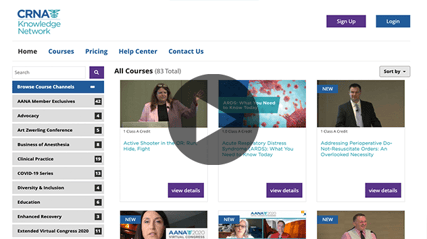
Sharing is Caring: Delivering Value to Your Members, On-Demand
We’ve talked a lot about creating content offerings in digital formats to meet the demand of an increasingly younger member base, but have you considered how your members will access that content? Is it easy to find and easy to consume?
While it’s great to have digital content designed to meet your association goals, how you deliver it to your audience is equally important. And, as with content creation, distribution models have evolved over the past decade.
Take cable television, for example. No matter the provider, the model is consistent; A monthly fee, which is dependent on the number and selection of channels the customer chooses to have, gave the user access to scheduled programming. Next, suppliers realized that people wanted to select and consume specific entertainment on their personal schedule, this led to recording options like PVRs and video-on-demand. Providers could charge a premium for these services and everything was supplemented by ad revenue.
The monopoly of this model was disrupted when technology finally caught up, and streaming video content became a viable option for consumers. With over the top (OTT) platforms, like Netflix, came a new distribution model; on-demand subscription. One flat monthly fee and subscribers have access to all the available content, on any device, with no advertising and no scheduling. Other providers soon followed suit, and now there is a steady growth of streaming services based on this model. It’s become so successful that even traditional TV channels are adopting the model and developing their own streaming platforms (i.e., CBS All Access, HBO Max, or NBC’s Peacock).
So, what can your association learn from this shift in consumption?
Let's look at a potential use case.
If your members are required to complete CE credits to remain certified in their field, you likely provide them with event content or on-demand content to review and tests to mark their progress via a Learning Management System (or LMS). But what is the current distribution model for these options?
With live events, content is available all at once and on your schedule. This is sometimes costly and restrictive for members that can’t attend.
On LMS systems, members are often paying for each course they take, this is likely making them more selective, which means that they view less of your content. In fact, instead of getting their content from your association, members are probably looking at other (perhaps free) resources online, even if they aren’t as comprehensive as your content.
So how do you keep members engaged with your content and your organization? Consider switching to an integrated subscription-based model. With a monthly fee, your members can access a variety of content on your digital hub, improving their experience and allowing them to learn on their own time instead of on a pre-existing schedule. In turn, this will entice more members to invest in a subscription and ultimately generate more non-dues revenue for your organization.
This increase in engagement can also help you narrow down what your members are looking for in an LMS. The topics, formats and even length of the content members interact with will give you insights into what you should invest in next. Using this information to adjust your offerings can drive further engagement, resulting in more satisfied members and a larger audience for your association’s offerings.

To see how this model was successfully applied to a real association, check out this conversation between Dan Stevens and Eric O’Connor, Chief Growth Officer for The American Association of Nurse Anesthetists.
While this is only one example of how changing a distribution model can lead to improved engagement and increased revenue, it is crucial to think about the holistic experience you deliver to your members and how you can meet their needs. For more examples, feel free to check out Chapter 8 of this book.
For even more actionable tips and insights on navigating your digital transformation, check out our Association Insights series.
Chapter 8: Learning from Netflix. A New Content and Funding Model
The evolution of association dues, content and education structures parallels the evolution of TV. Funding for the TV industry has been disrupted by streaming services like Netflix, that has consolidated all content services into one simple monthly subscription that provides value for many, removing the friction of asking for payment on each additional service. - click here to get your free copy today.

